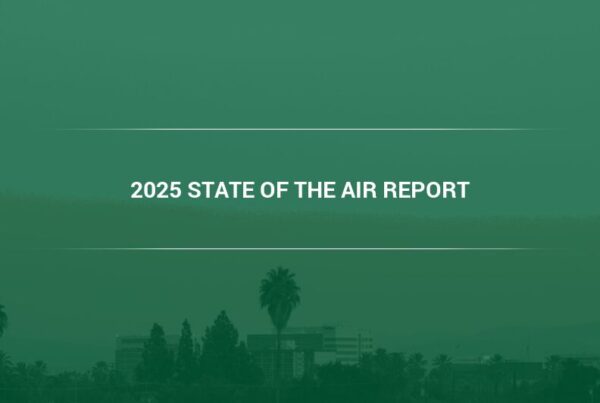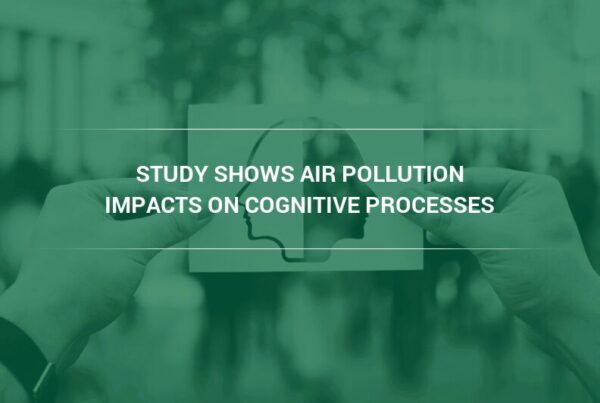In many locations across the United States and across the world, air quality is at its worst during the summer months. In this article, air pollution experts from global air filtration industry leader Camfil discuss the factors that lead to higher levels of pollution in the summer.
Arid Summer Weather Conditions Increase Particulate Matter
A combination of weather-related factors increase levels of particulate matter in the air in certain areas. Most notably, an extended period of time with no precipitation causes dirt, sand, and soil in the ground to become loose and dry, as opposed to its more stable, compact form during other seasons. As a result, the loosened ground is easier to disperse via the wind, as well as the wheels of vehicles and foot traffic, sometimes as much as doubling concentrations of particulate matter in the area.
Additionally, hot, sunny conditions facilitate the formation of ground-level ozone most efficiently. Although this effect is somewhat mitigated by humidity in some places, dry areas are especially at risk of experiencing increased ozone levels during the summer.
Wildfires Release Pollutants Far and Wide
Over the past several years, wildfires have been increasing in both scope and severity across the world. During June through August, wildfires are at their peak. Wildfire smoke contains a range of pollutants — both particulate and gaseous — that affect air quality not only in the immediate radius of the wildfire but also in areas thousands of miles away due to the ability for the wind to disperse wildfire smoke in all directions, causing hazy skies and poor air quality in areas far from the site of the wildfire.
Related: How to Protect Your Lungs During Wildfire Season, According to Camfil Air Quality Experts
Summertime Activities Release Pollutants
With children on summer break, the volume of people traveling for vacations is at its highest over the summer. Increased air and road travel and the increased release of exhaust that comes along with it lead to higher levels of ambient air pollution. Furthermore, popular summer activities such as lighting bonfires and setting off fireworks reduces overall air quality.
Summer Thunderstorms Increase Presence of Pollen
Although spring rain clears pollen from the air, the conditions in a summer thunderstorm cause a unique distribution of pollen and plant spores that have been known to trigger asthma attacks. This phenomenon — which has occurred in widespread waves in Australia, England, and Italy, but is known to occur in isolated incidences in other places — was a mystery to experts and researchers for decades.
However, a recent study published in the Journal of Applied Meteorology and Climatology examined a wave of “thunderstorm asthma” that occurred in Melbourne in 2016, resulting in over 8000 hospitalizations and 8 deaths. The researchers found that specific patterns of airflow, compounded by the humidity and static electricity in the air associated with summer storms, were likely responsible for the hazardous conditions. Downdrafts of cold air that form inside a thunderstorm work to concentrate pollen, mold spores, and other allergens, and then carry them into the clouds. The high humidity, windy conditions, and sometimes even lightning in the clouds rupture these particles and break them down into much smaller fragments that can bypass our bodies’ natural barriers and enter the lungs directly through the nose. Furthermore, windy conditions redistribute these dangerous particles around the area of the storm, leading to a larger radius of potential damage.
Air Conditioning Without Adequate Filtration Recirculates Pollutants
In most of the United States, where summer temperatures often soar over one hundred degrees, we would be very uncomfortable without using air conditioning in our homes and public spaces. At least 90% of American homes have some form of air conditioning, and 60% of those homes use a central air conditioning system.
Most central air conditioning systems are equipped with panel filters that are sufficient to protect the equipment from being damaged by large particles but do not protect building inhabitants from finer pollutants. As a result, HVAC systems may repeatedly recirculate polluted air while also bringing polluted outdoor air into the airstream.
To find the best air filtration solution to prevent your air conditioning from harming your lungs, discuss your options with your local Camfil representative.
About Camfil Clean Air Solutions
For more than half a century, Camfil has been helping people breathe cleaner air. As a leading manufacturer of premium clean air solutions, we provide commercial and industrial systems for air filtration and air pollution control that improve worker and equipment productivity, minimize energy use, and benefit human health and the environment. We firmly believe that the best solutions for our customers are the best solutions for our planet, too. That’s why every step of the way – from design to delivery and across the product life cycle – we consider the impact of what we do on people and on the world around us. Through a fresh approach to problem-solving, innovative design, precise process control, and a strong customer focus we aim to conserve more, use less and find better ways – so we can all breathe easier.
The Camfil Group is headquartered in Stockholm, Sweden, and has 31 manufacturing sites, six R&D centers, local sales offices in 35+ countries, and about 5,200 employees and growing. We proudly serve and support customers in a wide variety of industries and in communities across the world. To discover how Camfil USA can help you to protect people, processes and the environment, visit us at www.camfil.us/
##
Media Contact:
Lynne Laake
Camfil USA Air Filters
T: 888.599.6620
E: Lynne.Laake@camfil.com
F: Friend Camfil USA on Facebook
T: Follow Camfil USA on Twitter
Y: Watch Camfil Videos on YouTube
L: Follow our LinkedIn Page
Sources:
- https://scied.ucar.edu/learning-zone/air-quality/how-weather-affects-air-quality
- https://www.lung.org/blog/can-a-thunderstorm-trigger-asthma
- https://www.bloomberg.com/news/articles/2019-07-10/why-we-always-fight-over-air-conditioning
- https://journals.ametsoc.org/view/journals/apme/56/5/jamc-d-17-0027.1.xml



